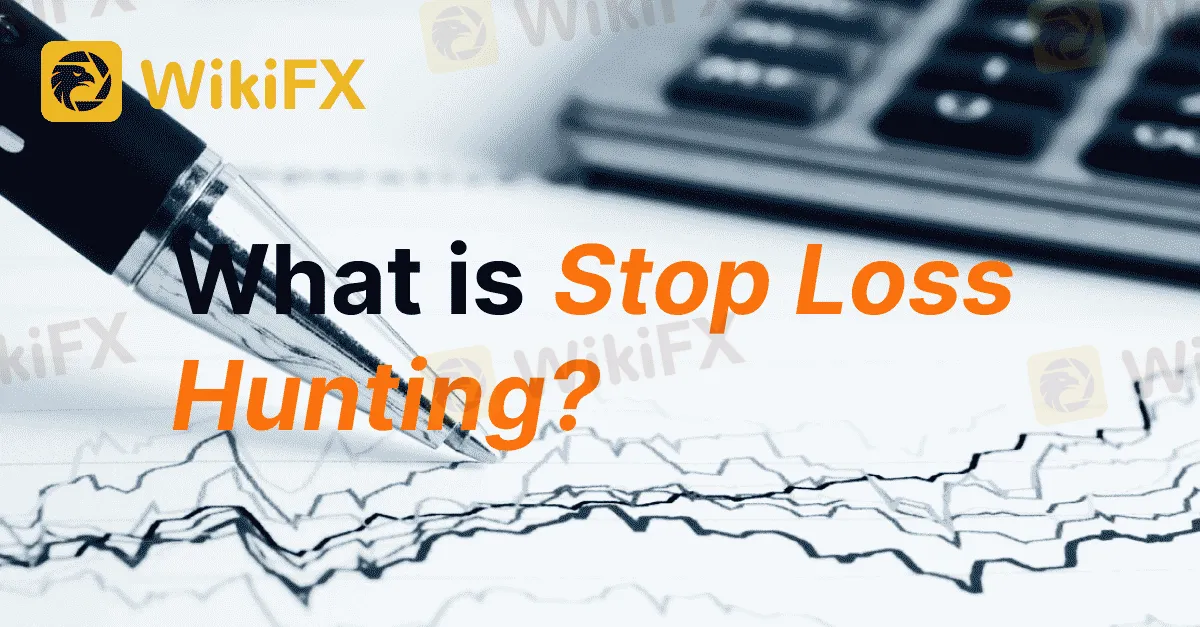简体中文
繁體中文
English
Pусский
日本語
ภาษาไทย
Tiếng Việt
Bahasa Indonesia
Español
हिन्दी
Filippiiniläinen
Français
Deutsch
Português
Türkçe
한국어
العربية
What is Stop Loss Hunting?
Abstract:The phenomenon known as "stop loss hunting" is often discussed among traders when describing market price movements, especially when trades don't go as planned. Traders may exclaim, "They got my stop loss!" However, it's important to understand stop loss hunting in a more precise manner to effectively manage risk and develop trading strategies.

The phenomenon known as “stop loss hunting” is often discussed among traders when describing market price movements, especially when trades don't go as planned. Traders may exclaim, “They got my stop loss!” However, it's important to understand stop loss hunting in a more precise manner to effectively manage risk and develop trading strategies.
While not all market movements can be attributed to stop loss hunting, it is beneficial for traders to grasp its rationale and mechanics. Stop-loss hunting is the act of deliberately triggering stop-loss orders, and although its existence is real, its impact is often more nuanced in financial markets. Liquidity providers are obligated to offer tradable prices, but they are not required to move them in a smooth and incremental manner. Stop loss hunting can be compared to gravity – invisible but with a noticeable effect.
The blame for stop-loss hunting is primarily directed at major financial institutions, including large brokers, dedicated market-making liquidity providers, and speculators. Various complex factors can cause a market to abruptly move through a technical price level, but it is rarely intended to target individual clients with stop-loss orders. However, powerful financial entities possess the resources to temporarily disrupt the market by pushing prices to levels where they anticipate triggering many stops placed by traders.
Stop loss hunting aims to eliminate active positions from the market and can weaken established support and resistance levels. Market makers may engage in this practice to generate profits and protect their positions against developing trends. Forex and commodities are two asset classes that are particularly susceptible to stop loss hunting, but it can also occur in other markets where derivatives allow for long and short positions.
Stop-loss orders are utilized by a wide range of speculators, both large and small, including day traders who use them to manage risk and protect against sudden trend reversals. Day traders often choose stop-loss levels based on technical indicators that have shown durable support or resistance within a specific timeframe.
The financial markets are filled with stop-loss orders, and institutional players, even without access to brokers' order books, have a good understanding of potential accumulation points where client stop losses are likely to be placed. Market-making brokerage firms that find themselves imbalanced in terms of risk exposure (either long or short) may have the incentive to eliminate positions and ensure financial stability. However, it's crucial to note that such actions can create unwarranted anxiety among small traders. While brokers with a significant institutional presence theoretically have the ability to engage in stop-loss hunting, it is important to recognize that not all institutions employ these practices and resort to them only when necessary.

Disclaimer:
The views in this article only represent the author's personal views, and do not constitute investment advice on this platform. This platform does not guarantee the accuracy, completeness and timeliness of the information in the article, and will not be liable for any loss caused by the use of or reliance on the information in the article.
Read more

Oleg Mukhanov Steps Down as TradingView CEO Amid Leadership Shakeup
In a surprising announcement on Thursday, Oleg Mukhanov, who has been at the forefront of TradingView’s growth over the past few years, revealed his decision to step down as CEO. Mukhanov, who ascended to the role in January 2024 after joining the technology giant in mid-2022 as Group Chief Financial Officer, will continue to serve as an advisor to TradingView’s board.

Deutsche Bank Facing Record Fine from German Watchdog – What’s the Price
Germany's watchdog imposed a EUR 23.05 million penalty to Deutsche Bank AG for violating several regulatory requirements under German law. According to the Authority, the company breached organisational requirements under the German Securities Trading Act in connection with the sale of derivatives. In addition, its Postbank branch disregarded the obligation to record investment advice and repeatedly failed to comply with the requirements of the German Payment Accounts Act regarding the account switching service.

The Hidden Tactics Brokers Use to Block Your Withdrawals
In the fast-paced world of online trading, liquidity is everything. Traders and investors must have unrestricted access to their funds at all times. Any broker that imposes unnecessary conditions or delays when it comes to withdrawals is raising a glaring red flag.

Forex Trading Mastery: The Ultimate Winning Formula
The foreign exchange market is inherently volatile, with its sharp fluctuations driven not only by changes in the global economic landscape but also by large-scale speculative capital and the influence of major market players, further intensifying its instability.
WikiFX Broker
Latest News
Is $CORONA Memecoin a Legit Crypto Investment?
Is Pi Network the Next Big Crypto Opportunity?
Is Linkbex a Scam? SFC Warns of Virtual Asset Fraud in Hong Kong
Donald Trump’s Pro-Crypto Push Boosts PH Markets
5 Best Copy Trading Brokers: You Can Trust in 2025
3 EXCLUSIVE Ramadan Offers That Won’t Last Long! ACT NOW
The Next Crypto Giants: 5 Altcoins to Watch
Japan’s Shift in Crypto Policy and What It Means for Investors
Forex Trading: Scam or Real Opportunity?
The Hidden Tactics Brokers Use to Block Your Withdrawals
Currency Calculator






